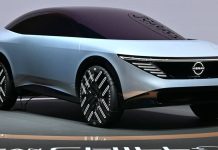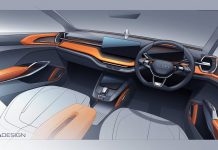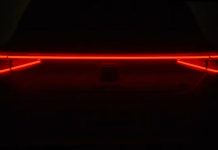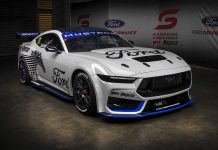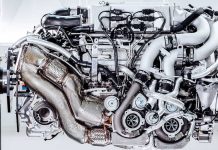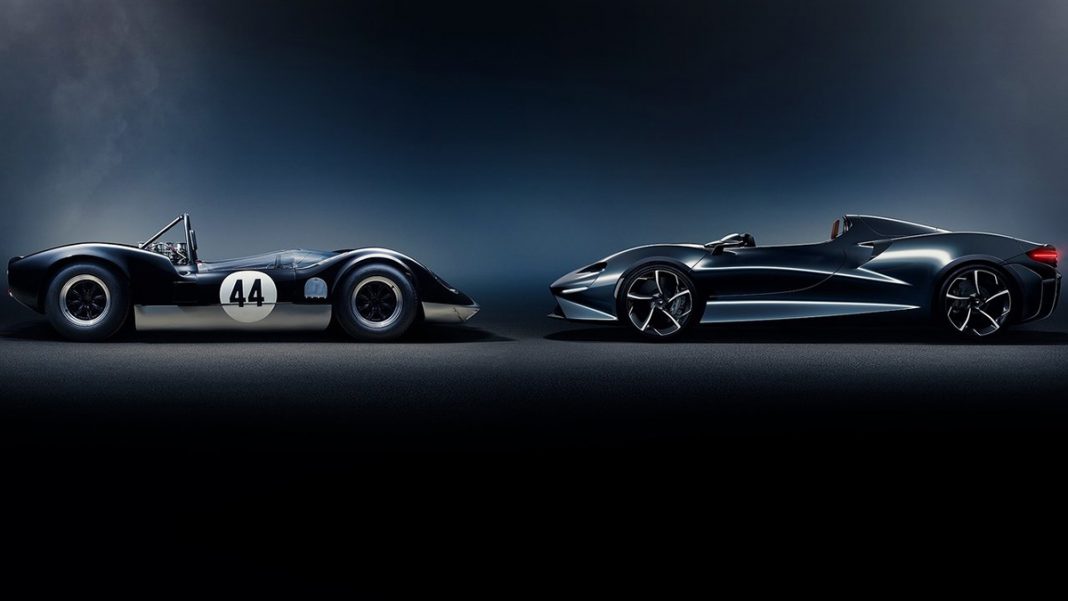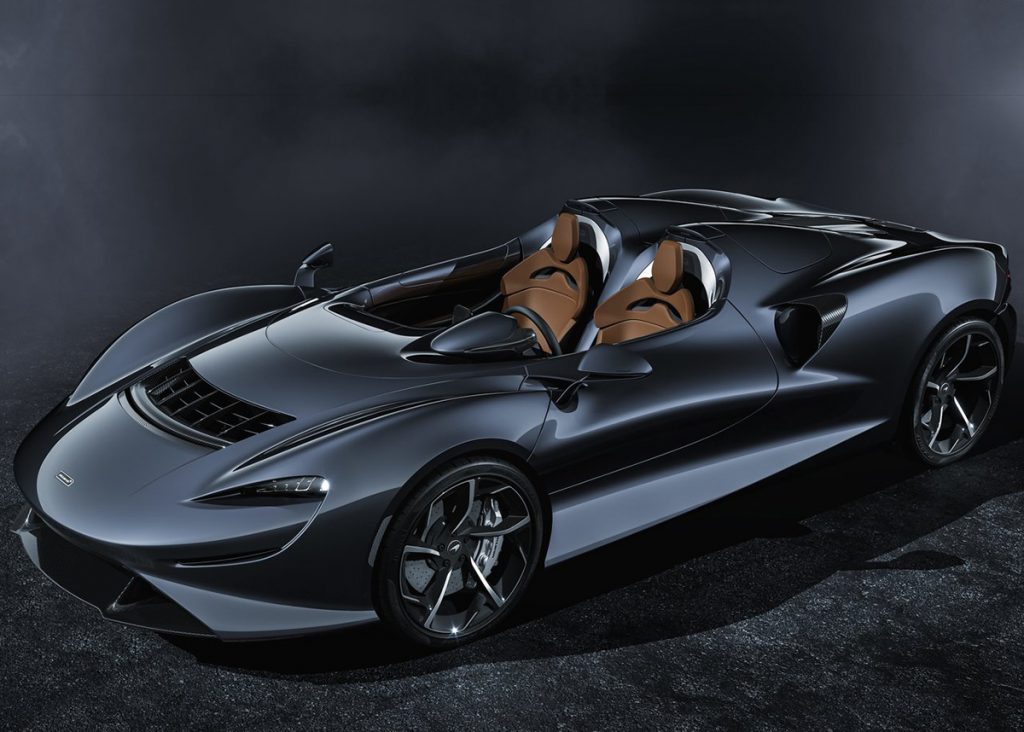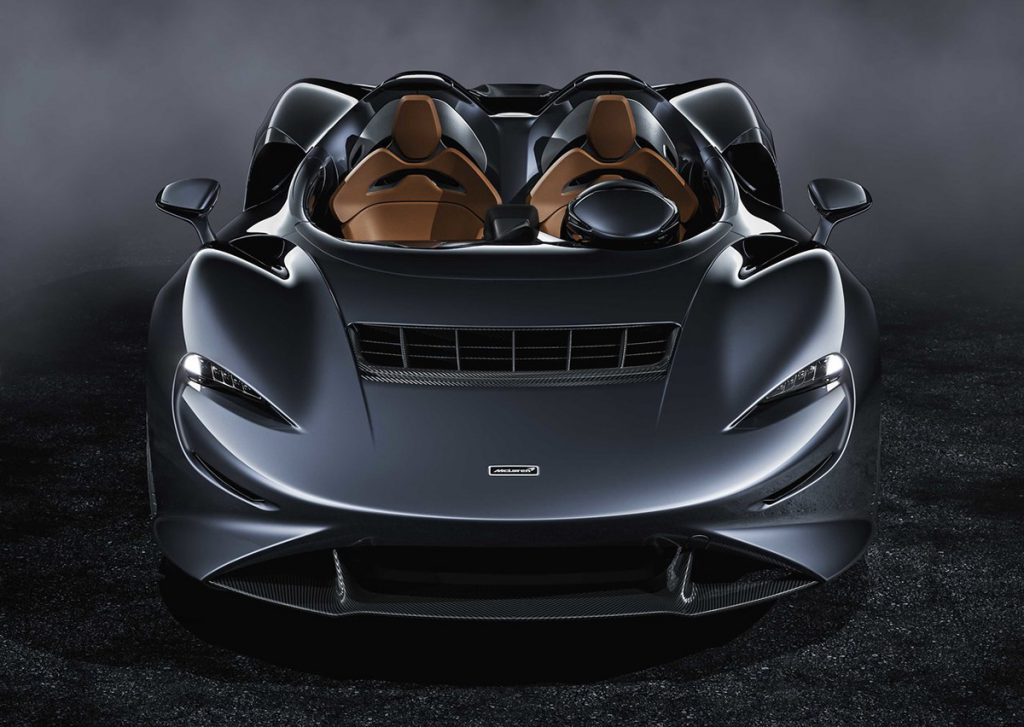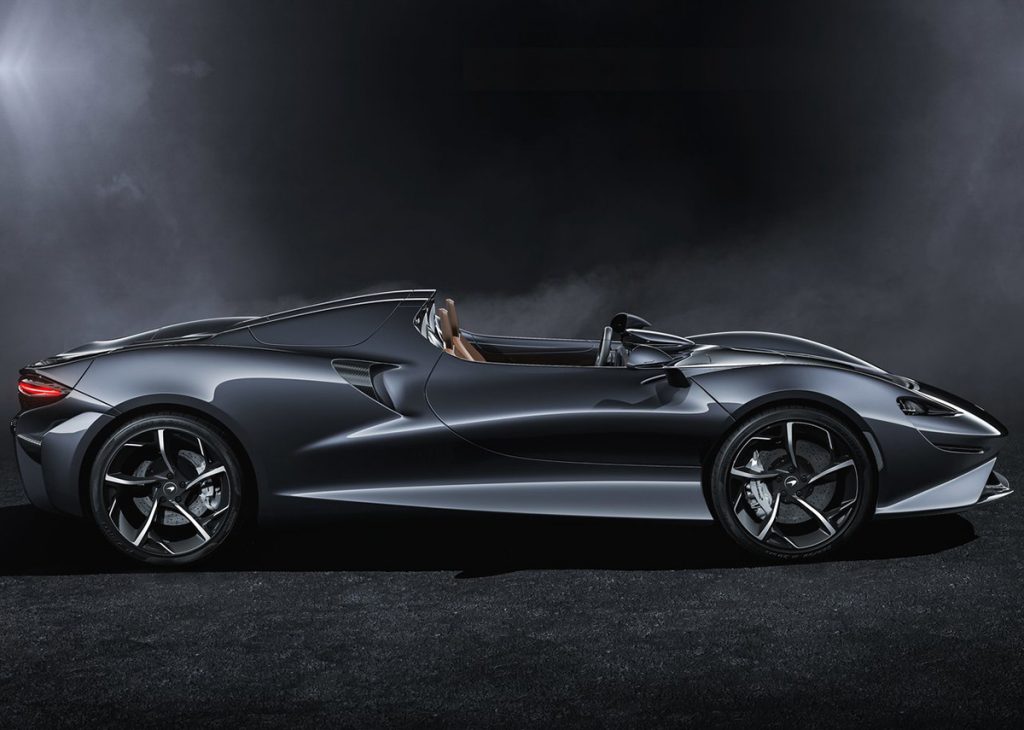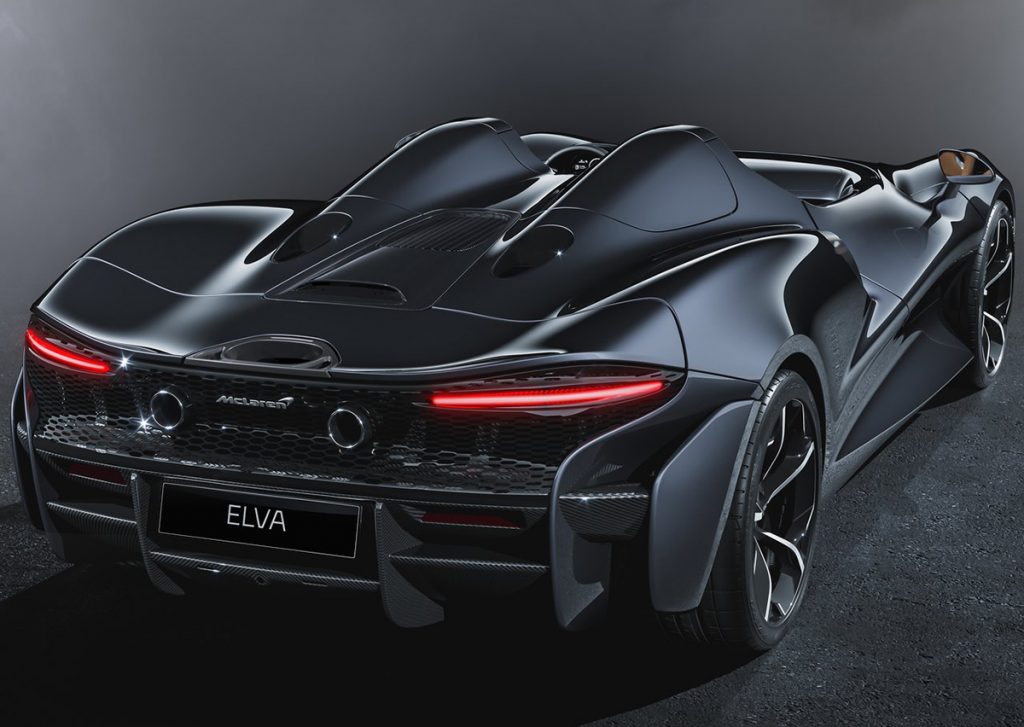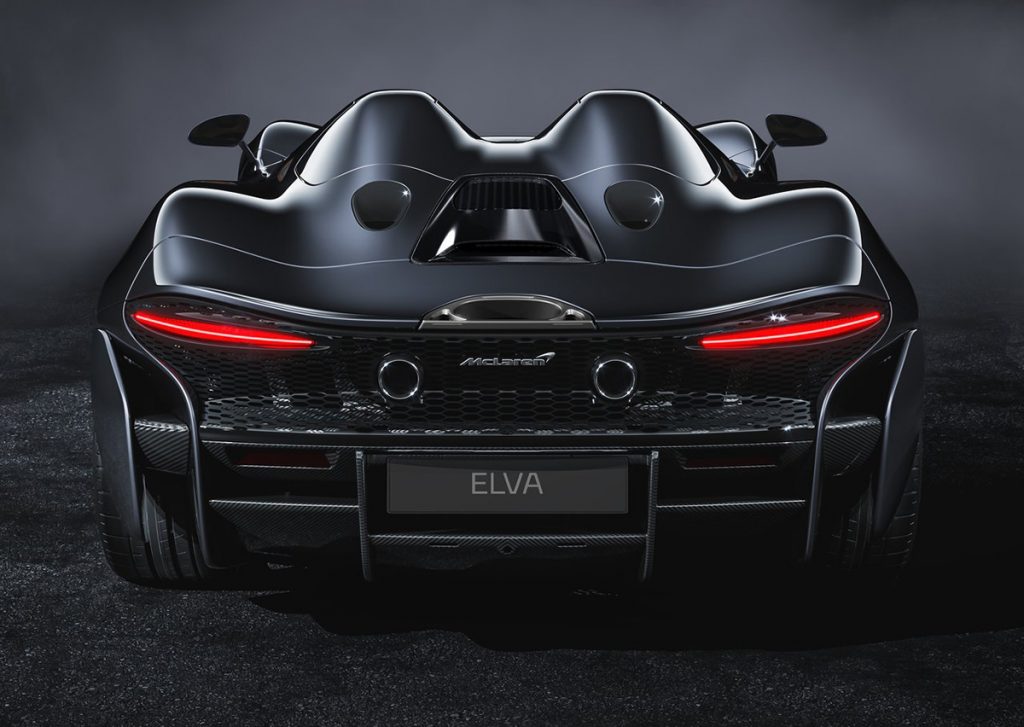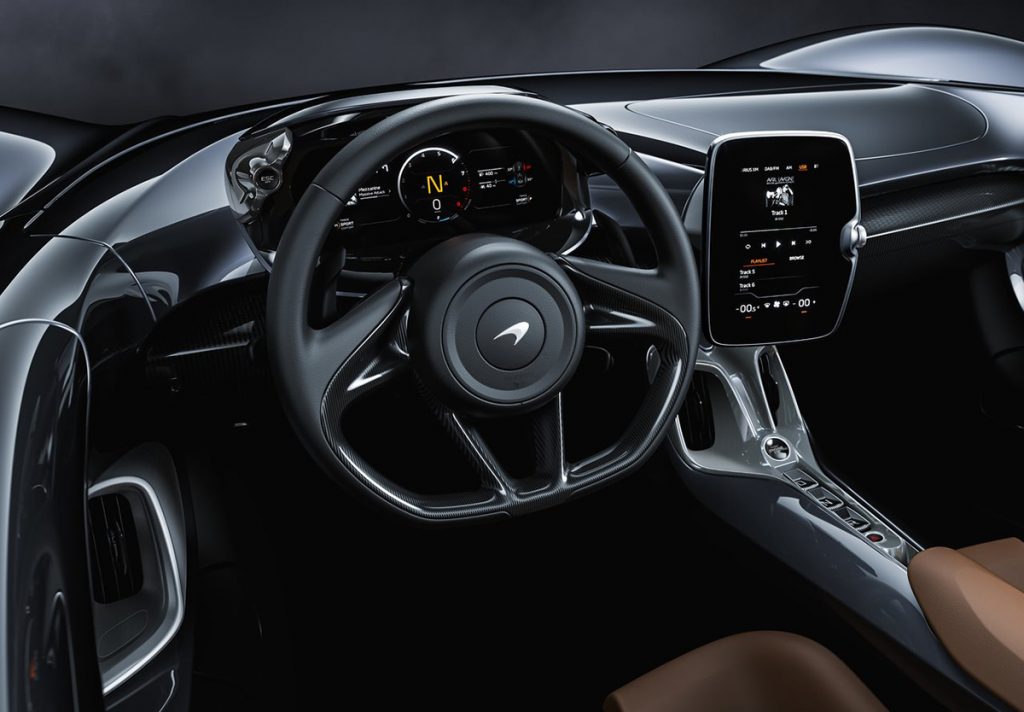McLaren Automotive today reveals its new Ultimate Series roadster, the McLaren Elva. As the brand’s first open-cockpit road car, the Elva adds a new dimension to the range-topping Ultimate Series lineage. Like its McLaren P1TM, McLaren Senna and Speedtail predecessors, volume of the new McLaren Elva will be strictly limited: just 399 are being offered for customer order.
The Elva name celebrates the renowned Bruce McLaren-designed M1A and McLaren-Elva M1A [Mk I], M1B [Mk II] and M1C [Mk III] of the 1960s. Produced as ‘customer’ versions of the innovative and exciting Group 7 McLaren race cars, the McLaren-Elva sportscars embodied many of the pioneering design and engineering principles that are integral to the McLaren road cars produced today.
World-first aero protection
A true connection with the elements is integral to the McLaren Elva driving experience but that hasn’t stopped McLaren innovating a world-first, the Active Air Management System (AAMS) to enhance driving pleasure. The system channels air through the nose of the Elva to come out of the front clamshell at high velocity ahead of the occupants before being directed up over the cockpit to create a relative ‘bubble’ of calm. The system comprises a large central inlet situated above the splitter, a front clamshell outlet vent and a discreet carbon fibre deflector that raises and lowers vertically; when the AAMS is active, the deflector is deployed at the leading edge of the bonnet outlet, rising 150mm into the freestream to create a low-pressure zone at the vent.
Aesthetic and technical design in harmony
McLaren’s design philosophy intrinsically links aesthetic design and technical design, rather than separating the disciplines of design and engineering as is commonplace in the automotive industry. The AAMS is an example of the results of this harmonious approach, being perfectly integrated within the aerodynamic and cooling functionality of the McLaren Elva.
When the AAMS is inactive, the central duct is sealed, diverting air flow into the low-temperature radiators and increasing their cooling efficiency. To provide optimal packaging conditions for the AAMS, the McLaren Elva features twin low-temperature radiators (LTRs) positioned ahead of each front wheel. The new cores used in these LTRs contribute to the engine’s 815PS power output by reducing charge air temperature and also cool the oil in the seven-speed seamless shift transmission.
Designed to deliver an elemental driving experience
Highlighting the intensity of the driving experience through the direct connection to the elements, there is no clear demarcation between the exterior of the McLaren Elva and the interior. The uppermost sections of the carbon fibre doors simply curve over and flow down into the cabin, the light, stiff and strong composite material providing the perfect properties to form such enticing shapes and forms. Complementing this unique design feature, the buttresses behind the driver and passenger also flow into the cabin behind the seats. While ensuring the driver and passenger remain exposed to the elements, the sculpture of the wraparound upper cabin environment enhances the feeling of security and protection within a cocooned interior.
A spar of carbon fibre additionally sweeps down from between the buttresses and runs between the driver and passenger seats to support a central armrest and cradle the engine start button and the controls for Drive, Neutral and Reverse functions. The seats themselves are of a bespoke design, with a new lightweight carbon fibre shell that not only supports the head, shoulder and back area of the occupants, but works seamlessly with the upper shape of the cabin. The lower area of each seat is marginally shorter than a conventional McLaren seat, allowing enough space within the footwells for driver or passenger to stand should they want to in order to enter or leave the vehicle. The seats are available with different upper and lower colours and materials, creating a contrast between the exposed upper section and cocooned lower section. Six-point race harnesses can be selected should the customer wish to use the McLaren Elva on track.
Ultimate, immersive performance
The core of the McLaren Elva is – as with every McLaren road or race car since 1981 – a carbon fibre monocoque. This state-of-the-art ‘tub’ is incredibly strong and stiff, and its inherent properties mean an open-top roadster does not require any additional strengthening as would be the case with a vehicle built from aluminium or steel. Conversely, despite its rigidity, carbon fibre is also incredibly light, helping to reduce the overall vehicle weight.
To that effect carbon fibre has also been used extensively throughout the McLaren Elva. The entire body is carbon, and McLaren has pushed the limits of the material to not only create incredible sculpted forms, but to also reduce weight. The front clamshell, for instance, is just 1.2mm thick and meets all of McLaren’s structural integrity targets – yet it forms an astonishing one-piece panel that wraps around the entire nose of the vehicle and provides a clean, uninterrupted vision without any panel joins. Perhaps even more impressive are the body side panels, which are each over three metres long and stretch from the front wheels, past the side intakes, around the rear tonneau cover and all the way until the active rear spoiler.
“We are delighted to have gained the rights to the Elva name for an extraordinary new roadster that adds a new dimension to the McLaren Ultimate Series while tracing its lineage back to the sportscars that laid the foundations for McLaren’s success. The McLaren-Elva M1A [Mk I] and its immediate successors not only set standards on the track but also established the pioneering design and engineering principles that remain at the heart of our brand; what better way to celebrate that than by bringing the Elva name right up to date.”








